869
Examination: Does freezing Belarusian diesel fuel?
In January frosts, when many diesel cars surrendered their owners complained about the quality of diesel fuel. In general, it is logical - what else can freeze at minus 15 degrees Celsius, unless diesel fuel? However, correspondents do decide to check: is it really the Belarusian diesel fuel "thermophilic". Of course, the easiest way was to thrust the flask with samples in the freezer and gradually reduce the degree, but we decided to do everything in a scientific way. Find experts who were willing to hold a special and emphasize independent research, we have succeeded only in Moscow. The test results are, frankly, get discouraged and left even more questions.
29 photos and text

Of course, diesel freezes. The question is, when? The standards have such a term - "the temperature limit of filterability." According to this index is determined at which point diesel fuel no longer flow through the filter to the engine. As explained by experts, the temperature is lowered physical and chemical properties of diesel fuel are starting to change. It becomes more viscous, turbid. This means that the beginning of the crystallization of paraffins, which are part of DT. Sieve filter of the car at some point to drive home, and the machine turns is not the vehicle, but rather an object moving on the tow truck.
This limiting temperature of filterability we are going to measure. But the study had nearly slipped, and it began. Find the lab, even in neighboring countries proved to be difficult. Specialists from the city, Siauliai, Vilnius, were ready to take up the study, but it could take a long time, and there were issues with the transport of fuel across the border. It would be difficult to explain customs, why we carry six cans of five liters of fuel.

Perhaps because of all these difficulties, and the drivers do not reach court. I can not hear in Belarus about loud claims in respect of filling stations. Evidence base from motorists whose cars "frozen", no, and go to court with nothing. And in the winter ... But how much of the winter!
We can help in Minsk. However, the Belarusian office of one reputable company refused to carry out the study, referring to the "discrepancy code of professional ethics and a number of provisions of normative and technical acts of Belarus governing sampling oil and petroleum products." In our view, appropriate to talk about ethics, such as defending the interests of customers refills, ie ordinary drivers. A sampling protocol could affect the purity of the experiment: what is the point to check the fuel, if the interested companies will be warned in advance?
We planned to take samples directly at the gas station to fill fuel canisters. Motorists refuel because exactly the same diesel fuel. So what's the difference? The task was not to conduct a formal investigation of compliance with all the formalities and check - fuel meets the stated characteristics or not!
In the end, we contacted the Russian State University of Oil and Gas. Gubkin, one of the laboratories which have the necessary international accreditation. At their core high school ethics violations have not seen: "You take on the role of conventional drivers. The necessary equipment is available, bring your samples, we will investigate. "

Fuel was purchased less than a day before the research. We have chosen five of the most famous and largest network of filling stations in Belarus: "Belorusneft" (many motorists know these refueling as "belneftehimovskie"), "Lukoil", "A-100", "Gazpromneft" and United Company. Our appearance at the pump with metal cans, no one raised suspicions, and we pretty quickly filled five of them five liters of diesel fuel Euro-5, and one filled with five liters of "Arctic".
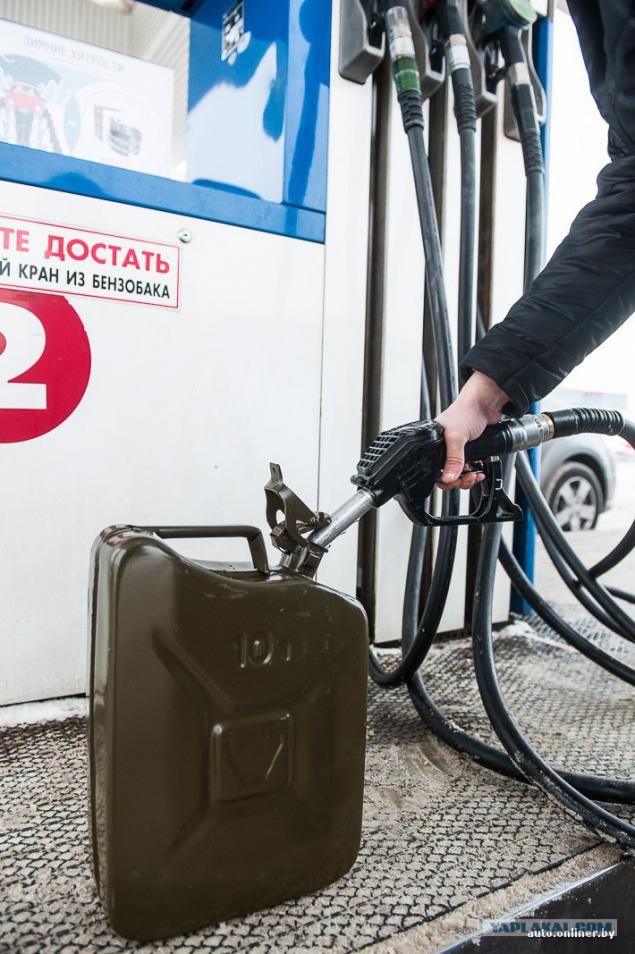
In fact, many probably noticed that, at petrol stations near the gun with a DT place a sticker in the form snowflakes. This means that the fed winter diesel (not to be confused with the Arctic!), Which was received at the gas station in the fall. There is also a summer, the Arctic and the Spring and diesel fuel.

For Belarus there are a standard (STB 1658; that is remarkable - in the public domain it is not), which establishes limit filterability temperature of diesel fuel for the winter. To find out, we had to immerse themselves in the study of very specific questions. As it turned out, the winter diesel has six grades - from A to F. We bought only grade of F. For a filterability limit temperature is not higher than minus 20 degrees.
With Arctic fuel (by the way, "Arctic" - a trademark) is the same story. Five classes, and each has its own temperature limit of filterability. At the gas station we are "refueled" second class. This means no more than minus 32. From these figures, and we will draw on.

We deliberately left on the metal canisters no markings except digits. This is the only designation that allows us to understand at what the gas station the sample was taken. Running a little ahead, we note that employees of chemical analytical laboratory of the University saw only numbers. Of course, they knew that selection was conducted on the Belarusian gas stations, but no - they had no idea. Complete anonymity was guaranteed.

Less than a day later the cans were delivered to Moscow. It was immediately clear that we have got to address. Shelves lined with tanks in the laboratory with various technical liquids on the table - the application of several Russian television stations, newspapers and car magazines. It examines the characteristics of gasoline, kerosene, jet fuel, fuel oil, motor oil, windshield wipers and so on. D. So autojournalists usually initiate such tests, there are frequent guests.
It takes a few minutes filling in the act of acceptance tests. At the formalities over, and the Belarusian diesel fuel sent to the Japanese apparatus.
Engineer technician pours into the beaker exactly 45 ml and a single gram more! A bit strange to be considered in the light diesel oil. The color and transparency, it resembles the birch juice, which were sold earlier in the three-liter jar.

09

10

Then the sample is placed in a Japanese unit. This is an automatic analyzer, which was bought a year ago. Previously limit temperature filterability was determined using an instrument, wherein cooling occurs due to a mixture of acetone and carbon dioxide ("dry ice"). Now everything makes impartial electronics.
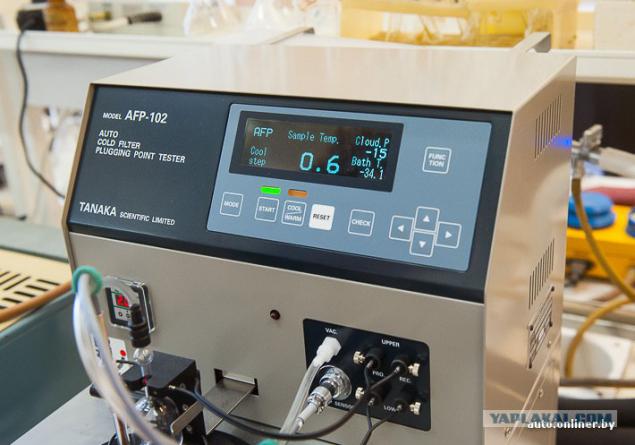
- First, the unit cools the fuel. When it reaches a certain temperature, begins the main action - explains an example of the sample №1 (she was taken to the gas station of "Belorusneft") engineering laboratory Elena Golovacheva. - Below is a filter in the car. Through it fuels "it sucked" into a special flask, which is outside. If the entire volume of the sample slip through the filter in less than 60 seconds, that's all right. Fuel is returned and cooled for another degree. Then again and again.
The longest-lasting cooling of the fuel. Finally it reaches a temperature of minus 10 degrees and begin immediately the process of testing. In just a few seconds (and not 60) the bulb is filled with thick white-yellow liquid. Microtest passed!
Then the fuel is cooled again ... minus 11 degrees. The bulb is filled with a bit slower, but still fit in a minute. Strange, because many are already in such cold weather could not start.

13

14
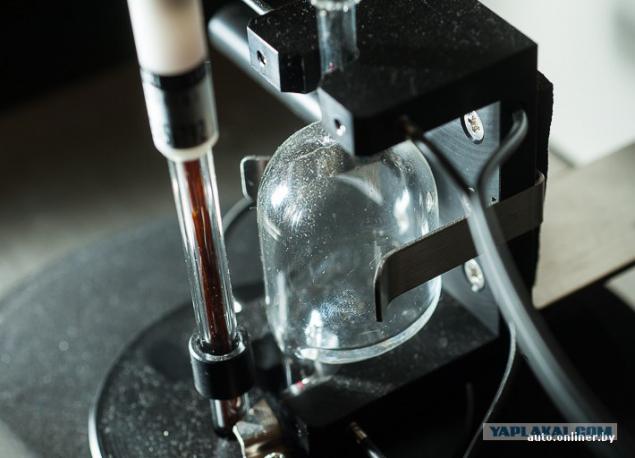
Minus 12 degrees, 13, 14 ... Diesel Oil does not give up, do not freeze to a thick liquid, a blocking filter. Minus 18, 19, 20 ... Finally cone does not have time to fill in a minute. Extremes in degrees is the temperature limit of filterability. In this case, it was minus 26 degrees! The result, to be honest, was unexpected. It turns out that diesel is not only in a desired characteristic (note the minus 20 degrees to grade F), but also has a certain margin.

Further, the equipment is sent to a sample №2. This is the "Arctic", which we have acquired as at the gas station of "Belorusneft" (№1 and №2 samples were taken at different gas stations). Last year, the fuel was in short supply. Even in Minsk queues of cars. Buy Now "Arctic" is not a problem - "Belorusneft" has taken into account the lessons of last winter. But what is the main feature of this fuel - frost?
- Limit filterability temperature of the sample is minus 36 degrees, - announces engineer technician. If we consider that the Belarusian Standard (second class) - minus 32, it is also obtained from the surplus. However, this did not surprise us.
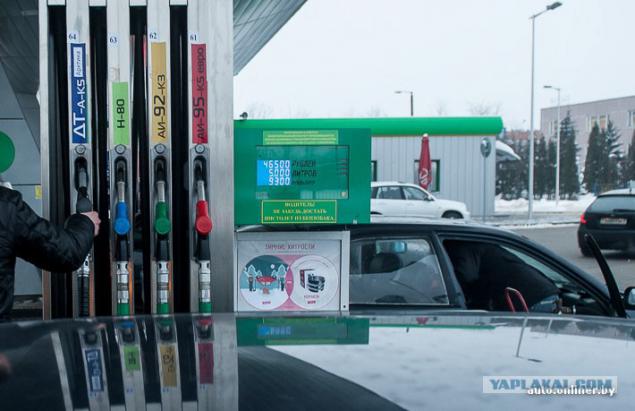
17
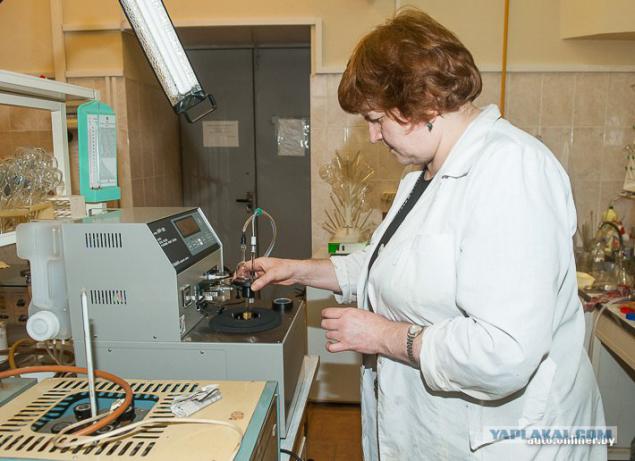
The sample was taken №3 to "Gazpromneft". While exploring it, we ask how all this research is significant in terms of determining the frost fuel.

- It really is the most important indicator in the cold. Earlier, in Soviet times, it was used mainly for diesel fuel supplied for export, - the expert gave a brief comment on the certification of oil lab Ranida Omarov. - Now it is important for the internal market. In our laboratory often turn ordinary motorists. One test was conducted at the request of a female driver, who came to us from one of the Russian cities. As she tucked frost, drove a short distance and the car stalled. He was taken to the service station, where the samples were taken fuel. The test showed that the limiting temperature of filterability do not always apply. It turned out, DT has been diluted presumably kerosene. Of course, to say at what point this happened, we can not. The matter went to court.

Meanwhile, the finished result - minus 29 degrees. Again, with a margin.
On one of the gas stations "Lukoil", which is often criticized for the quality of fuel at the forum, we have filled canister of five liters. The study sample showed much №4 minus 30 degrees.
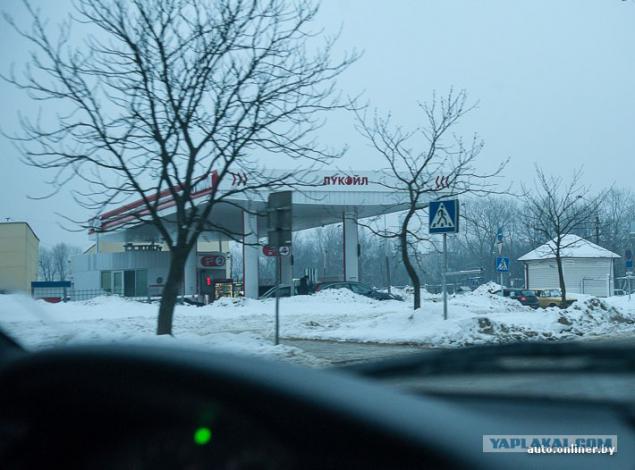
In general, experts say, do diesel "workable" in the cold several ways. One of them - to add (network of filling stations or ordinary motorists) additives, such as depressants, which lower the temperature of the diesel fuel. Another - the production, using the hydrotreater. Through dewaxing, removing certain hydrocarbons. True, a few losing fuel lubricity.
It looks like a frozen fuel. His temperature reached minus 30 degrees
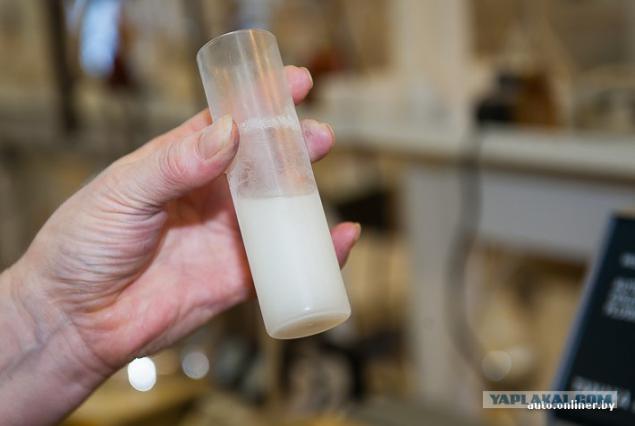
22
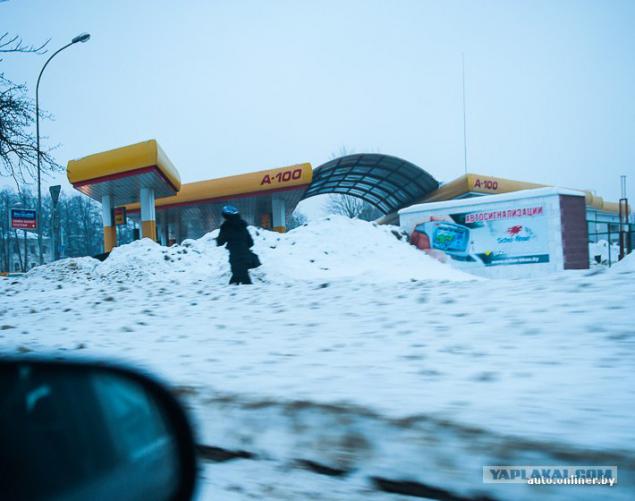
23
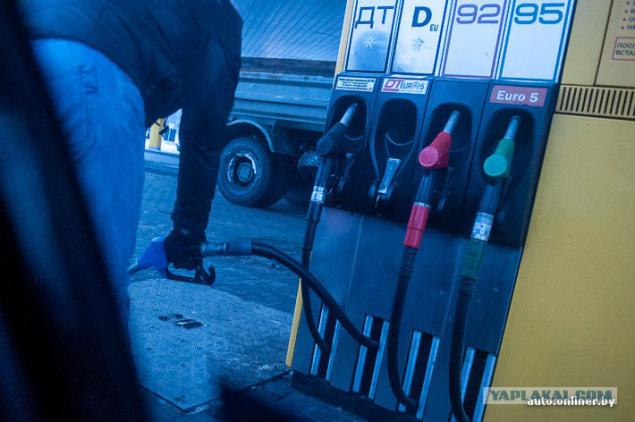
24

25

Again, the fuel goes into the analyzer. Minuc minuc 20 and 25, respectively. At this point, we have begun to doubt: and whether the device is working properly?

- Of course. There is a control sample that I can provide for the analysis, and I will not even know that it is a state standard sample having the characteristics shown in the passport, - says Elena Golovacheva. - And each sample is tested twice to eliminate inaccuracy.

Of course, we expected that some samples will conform to the standards. But to all, so even with the stock - it seemed unreal. The competence of the laboratory staff and equipment, regularly passing State monitoring, no doubt. If a research organization engaged someone else, it would be possible to suspect a conspiracy. But outsiders to venture devoted we were not for that we can guarantee. And when some gas stations and will be sampling, general decided only two people. Cans were always closed the trunk, and no access to him had
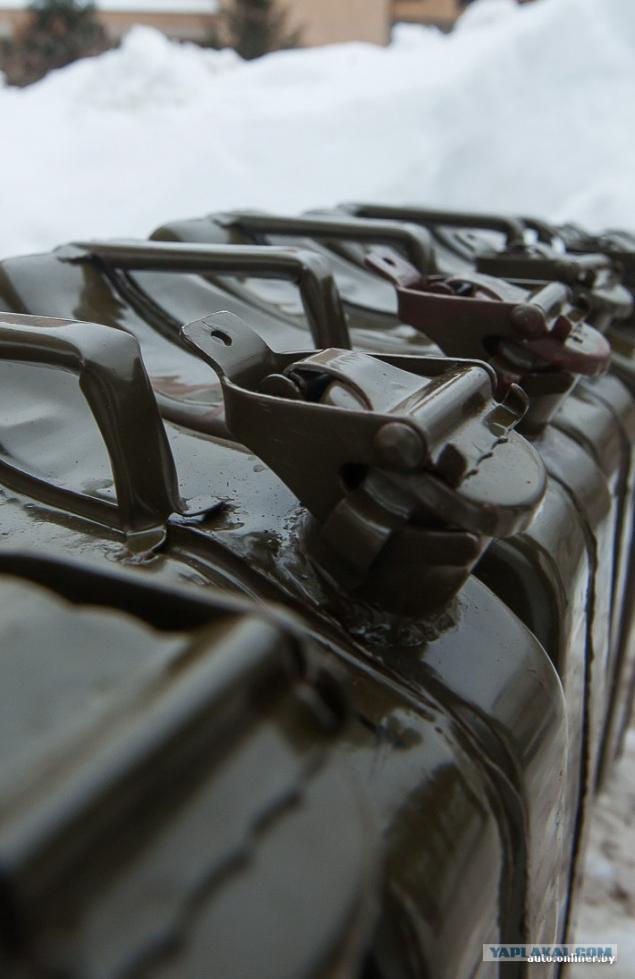
Suppose that at some point all the network of gas stations suddenly decided to pour quality fuel, and before that comes with the worst performance, we can not. The proof of this we have not. However, since the temperature limit of filterability meets why diesel cars still fade away in the cold? After all, it is an indisputable fact! And cars factory, passing for some distance and then stand perfectly still, t. E. It is not the battery. Perhaps the reason the filters themselves? It is believed that during the movement are, if not provided for heating, freezing in the wind. Like, cooling elements are sensitive to frost when the machine is moving more intense, and the fuel temperature falls below the ambient temperature. And someone says that the filters have dead zones, which are clogged with paraffin, inherited from the summer diesel fuel. Versions of many. What to believe?
- It is likely that the fuel system enter the remnants of summer diesel fuel - believe in the department of internal combustion engines autotractor faculty of the Belarusian National Technical University. - After all, how often? Winter fuel is poured over the summer, which will inevitably left in the tank car. Paraffin is not gone anywhere! They crystallize and getting into the filter elements, plug them. If the car is standing, the engine probably would have worked, but it is in motion, the fuel in the tank is mixed. At the time, we conducted an experiment: decompressors added, but bad elements, as we call them, the fuel remained, paralyzing the operation of the engine. The advice is simple - before the cold weather you need to completely clean the fuel system from the summer, and only then pour the winter.
We also asked for comments to those cars to warm in the cold, change filters, reminiscent of paraffin wax candles, - employees of service stations. Opinions expressed were too many. But one of the most typical.
- Freezing the filter - it is a consequence. The reason must be sought in the tank, - says Ilya Orekhov, the owner of one of the Minsk SRT skeptical otnesshiysya to the study. - Today, many modern cars are equipped with a heated filter due to the cooling system. I could believe that the fuel quality, but personally encountered such: to insert a new car original filter, ask the owner of the machine to use the additive. He does not listen to advice and after a while gets to us. Exit? Use it proprietary additives (and strictly according to instructions and do not just fill the tank), and a long time to warm up the engine before you start. The preheated fuel through a so-called return line enters the tank, and this has a positive effect on the operation of the fuel system in the cold. In fact, many customers say that this year's "Arctic" higher quality. But in the past brought cars stuffed and this fuel. We ourselves have conducted a little experiment: in January frosts took transparent canister filled with their usual diesel fuel and "Arctic", and left for the night on the street near the service station. On the morning of conventional fuels like milk, and "Arctic" as it was clear, and so it remained.
* * *
Soon to be held February thaw, frost hit again, probably will again stall vehicles. If you could look inside the fuel system during engine operation, it is likely to question the quality of fuel and filters would remove themselves. But, alas, it is impossible to do, and the reasons for downtime diesel cars still only speculate on circumstantial evidence.
source

Source:
29 photos and text

Of course, diesel freezes. The question is, when? The standards have such a term - "the temperature limit of filterability." According to this index is determined at which point diesel fuel no longer flow through the filter to the engine. As explained by experts, the temperature is lowered physical and chemical properties of diesel fuel are starting to change. It becomes more viscous, turbid. This means that the beginning of the crystallization of paraffins, which are part of DT. Sieve filter of the car at some point to drive home, and the machine turns is not the vehicle, but rather an object moving on the tow truck.
This limiting temperature of filterability we are going to measure. But the study had nearly slipped, and it began. Find the lab, even in neighboring countries proved to be difficult. Specialists from the city, Siauliai, Vilnius, were ready to take up the study, but it could take a long time, and there were issues with the transport of fuel across the border. It would be difficult to explain customs, why we carry six cans of five liters of fuel.

Perhaps because of all these difficulties, and the drivers do not reach court. I can not hear in Belarus about loud claims in respect of filling stations. Evidence base from motorists whose cars "frozen", no, and go to court with nothing. And in the winter ... But how much of the winter!
We can help in Minsk. However, the Belarusian office of one reputable company refused to carry out the study, referring to the "discrepancy code of professional ethics and a number of provisions of normative and technical acts of Belarus governing sampling oil and petroleum products." In our view, appropriate to talk about ethics, such as defending the interests of customers refills, ie ordinary drivers. A sampling protocol could affect the purity of the experiment: what is the point to check the fuel, if the interested companies will be warned in advance?
We planned to take samples directly at the gas station to fill fuel canisters. Motorists refuel because exactly the same diesel fuel. So what's the difference? The task was not to conduct a formal investigation of compliance with all the formalities and check - fuel meets the stated characteristics or not!
In the end, we contacted the Russian State University of Oil and Gas. Gubkin, one of the laboratories which have the necessary international accreditation. At their core high school ethics violations have not seen: "You take on the role of conventional drivers. The necessary equipment is available, bring your samples, we will investigate. "

Fuel was purchased less than a day before the research. We have chosen five of the most famous and largest network of filling stations in Belarus: "Belorusneft" (many motorists know these refueling as "belneftehimovskie"), "Lukoil", "A-100", "Gazpromneft" and United Company. Our appearance at the pump with metal cans, no one raised suspicions, and we pretty quickly filled five of them five liters of diesel fuel Euro-5, and one filled with five liters of "Arctic".

In fact, many probably noticed that, at petrol stations near the gun with a DT place a sticker in the form snowflakes. This means that the fed winter diesel (not to be confused with the Arctic!), Which was received at the gas station in the fall. There is also a summer, the Arctic and the Spring and diesel fuel.

For Belarus there are a standard (STB 1658; that is remarkable - in the public domain it is not), which establishes limit filterability temperature of diesel fuel for the winter. To find out, we had to immerse themselves in the study of very specific questions. As it turned out, the winter diesel has six grades - from A to F. We bought only grade of F. For a filterability limit temperature is not higher than minus 20 degrees.
With Arctic fuel (by the way, "Arctic" - a trademark) is the same story. Five classes, and each has its own temperature limit of filterability. At the gas station we are "refueled" second class. This means no more than minus 32. From these figures, and we will draw on.

We deliberately left on the metal canisters no markings except digits. This is the only designation that allows us to understand at what the gas station the sample was taken. Running a little ahead, we note that employees of chemical analytical laboratory of the University saw only numbers. Of course, they knew that selection was conducted on the Belarusian gas stations, but no - they had no idea. Complete anonymity was guaranteed.

Less than a day later the cans were delivered to Moscow. It was immediately clear that we have got to address. Shelves lined with tanks in the laboratory with various technical liquids on the table - the application of several Russian television stations, newspapers and car magazines. It examines the characteristics of gasoline, kerosene, jet fuel, fuel oil, motor oil, windshield wipers and so on. D. So autojournalists usually initiate such tests, there are frequent guests.
It takes a few minutes filling in the act of acceptance tests. At the formalities over, and the Belarusian diesel fuel sent to the Japanese apparatus.
Engineer technician pours into the beaker exactly 45 ml and a single gram more! A bit strange to be considered in the light diesel oil. The color and transparency, it resembles the birch juice, which were sold earlier in the three-liter jar.

09

10

Then the sample is placed in a Japanese unit. This is an automatic analyzer, which was bought a year ago. Previously limit temperature filterability was determined using an instrument, wherein cooling occurs due to a mixture of acetone and carbon dioxide ("dry ice"). Now everything makes impartial electronics.

- First, the unit cools the fuel. When it reaches a certain temperature, begins the main action - explains an example of the sample №1 (she was taken to the gas station of "Belorusneft") engineering laboratory Elena Golovacheva. - Below is a filter in the car. Through it fuels "it sucked" into a special flask, which is outside. If the entire volume of the sample slip through the filter in less than 60 seconds, that's all right. Fuel is returned and cooled for another degree. Then again and again.
The longest-lasting cooling of the fuel. Finally it reaches a temperature of minus 10 degrees and begin immediately the process of testing. In just a few seconds (and not 60) the bulb is filled with thick white-yellow liquid. Microtest passed!
Then the fuel is cooled again ... minus 11 degrees. The bulb is filled with a bit slower, but still fit in a minute. Strange, because many are already in such cold weather could not start.

13

14

Minus 12 degrees, 13, 14 ... Diesel Oil does not give up, do not freeze to a thick liquid, a blocking filter. Minus 18, 19, 20 ... Finally cone does not have time to fill in a minute. Extremes in degrees is the temperature limit of filterability. In this case, it was minus 26 degrees! The result, to be honest, was unexpected. It turns out that diesel is not only in a desired characteristic (note the minus 20 degrees to grade F), but also has a certain margin.

Further, the equipment is sent to a sample №2. This is the "Arctic", which we have acquired as at the gas station of "Belorusneft" (№1 and №2 samples were taken at different gas stations). Last year, the fuel was in short supply. Even in Minsk queues of cars. Buy Now "Arctic" is not a problem - "Belorusneft" has taken into account the lessons of last winter. But what is the main feature of this fuel - frost?
- Limit filterability temperature of the sample is minus 36 degrees, - announces engineer technician. If we consider that the Belarusian Standard (second class) - minus 32, it is also obtained from the surplus. However, this did not surprise us.

17

The sample was taken №3 to "Gazpromneft". While exploring it, we ask how all this research is significant in terms of determining the frost fuel.

- It really is the most important indicator in the cold. Earlier, in Soviet times, it was used mainly for diesel fuel supplied for export, - the expert gave a brief comment on the certification of oil lab Ranida Omarov. - Now it is important for the internal market. In our laboratory often turn ordinary motorists. One test was conducted at the request of a female driver, who came to us from one of the Russian cities. As she tucked frost, drove a short distance and the car stalled. He was taken to the service station, where the samples were taken fuel. The test showed that the limiting temperature of filterability do not always apply. It turned out, DT has been diluted presumably kerosene. Of course, to say at what point this happened, we can not. The matter went to court.

Meanwhile, the finished result - minus 29 degrees. Again, with a margin.
On one of the gas stations "Lukoil", which is often criticized for the quality of fuel at the forum, we have filled canister of five liters. The study sample showed much №4 minus 30 degrees.

In general, experts say, do diesel "workable" in the cold several ways. One of them - to add (network of filling stations or ordinary motorists) additives, such as depressants, which lower the temperature of the diesel fuel. Another - the production, using the hydrotreater. Through dewaxing, removing certain hydrocarbons. True, a few losing fuel lubricity.
It looks like a frozen fuel. His temperature reached minus 30 degrees

22

23

24

25

Again, the fuel goes into the analyzer. Minuc minuc 20 and 25, respectively. At this point, we have begun to doubt: and whether the device is working properly?

- Of course. There is a control sample that I can provide for the analysis, and I will not even know that it is a state standard sample having the characteristics shown in the passport, - says Elena Golovacheva. - And each sample is tested twice to eliminate inaccuracy.

Of course, we expected that some samples will conform to the standards. But to all, so even with the stock - it seemed unreal. The competence of the laboratory staff and equipment, regularly passing State monitoring, no doubt. If a research organization engaged someone else, it would be possible to suspect a conspiracy. But outsiders to venture devoted we were not for that we can guarantee. And when some gas stations and will be sampling, general decided only two people. Cans were always closed the trunk, and no access to him had

Suppose that at some point all the network of gas stations suddenly decided to pour quality fuel, and before that comes with the worst performance, we can not. The proof of this we have not. However, since the temperature limit of filterability meets why diesel cars still fade away in the cold? After all, it is an indisputable fact! And cars factory, passing for some distance and then stand perfectly still, t. E. It is not the battery. Perhaps the reason the filters themselves? It is believed that during the movement are, if not provided for heating, freezing in the wind. Like, cooling elements are sensitive to frost when the machine is moving more intense, and the fuel temperature falls below the ambient temperature. And someone says that the filters have dead zones, which are clogged with paraffin, inherited from the summer diesel fuel. Versions of many. What to believe?
- It is likely that the fuel system enter the remnants of summer diesel fuel - believe in the department of internal combustion engines autotractor faculty of the Belarusian National Technical University. - After all, how often? Winter fuel is poured over the summer, which will inevitably left in the tank car. Paraffin is not gone anywhere! They crystallize and getting into the filter elements, plug them. If the car is standing, the engine probably would have worked, but it is in motion, the fuel in the tank is mixed. At the time, we conducted an experiment: decompressors added, but bad elements, as we call them, the fuel remained, paralyzing the operation of the engine. The advice is simple - before the cold weather you need to completely clean the fuel system from the summer, and only then pour the winter.
We also asked for comments to those cars to warm in the cold, change filters, reminiscent of paraffin wax candles, - employees of service stations. Opinions expressed were too many. But one of the most typical.
- Freezing the filter - it is a consequence. The reason must be sought in the tank, - says Ilya Orekhov, the owner of one of the Minsk SRT skeptical otnesshiysya to the study. - Today, many modern cars are equipped with a heated filter due to the cooling system. I could believe that the fuel quality, but personally encountered such: to insert a new car original filter, ask the owner of the machine to use the additive. He does not listen to advice and after a while gets to us. Exit? Use it proprietary additives (and strictly according to instructions and do not just fill the tank), and a long time to warm up the engine before you start. The preheated fuel through a so-called return line enters the tank, and this has a positive effect on the operation of the fuel system in the cold. In fact, many customers say that this year's "Arctic" higher quality. But in the past brought cars stuffed and this fuel. We ourselves have conducted a little experiment: in January frosts took transparent canister filled with their usual diesel fuel and "Arctic", and left for the night on the street near the service station. On the morning of conventional fuels like milk, and "Arctic" as it was clear, and so it remained.
* * *
Soon to be held February thaw, frost hit again, probably will again stall vehicles. If you could look inside the fuel system during engine operation, it is likely to question the quality of fuel and filters would remove themselves. But, alas, it is impossible to do, and the reasons for downtime diesel cars still only speculate on circumstantial evidence.
source

Source:























